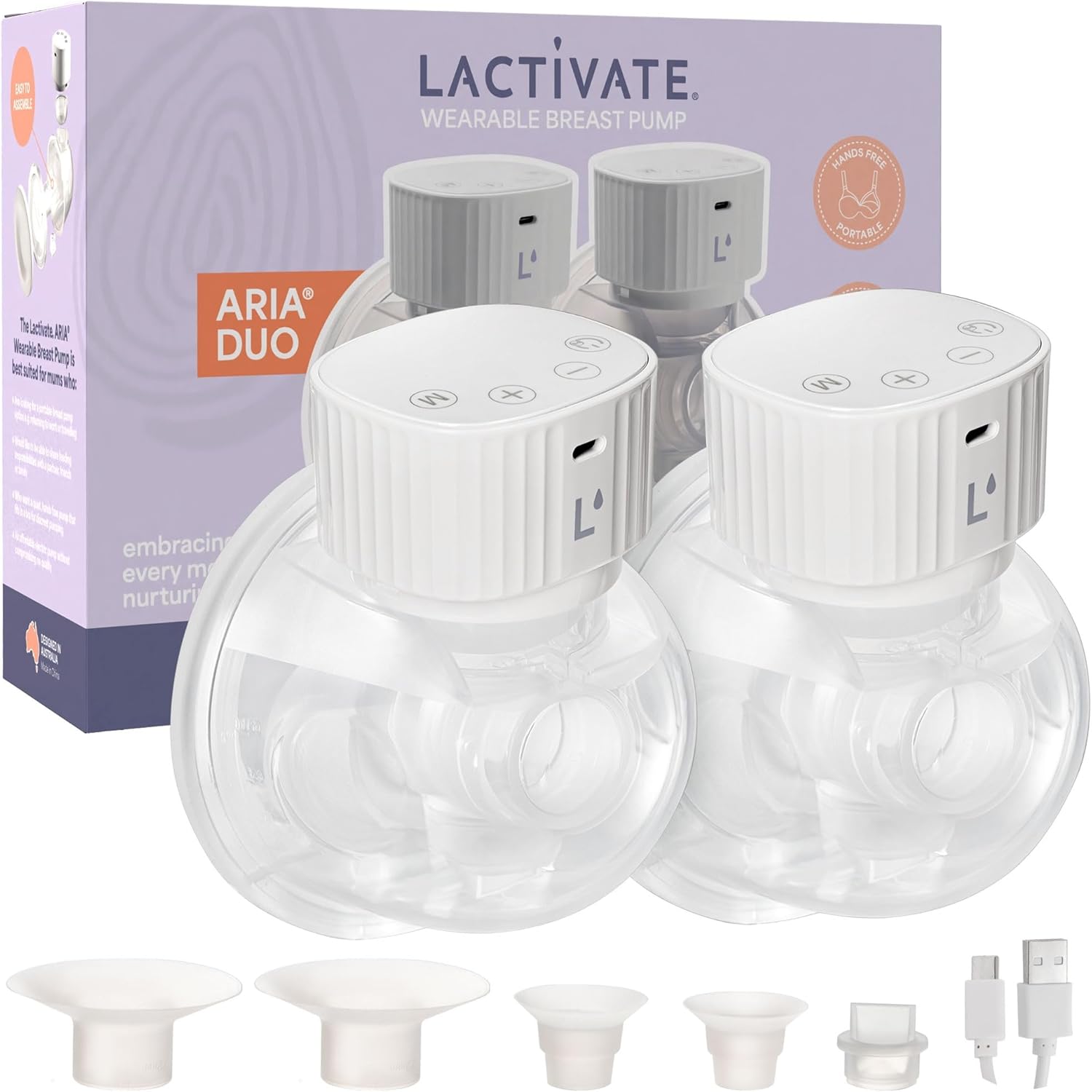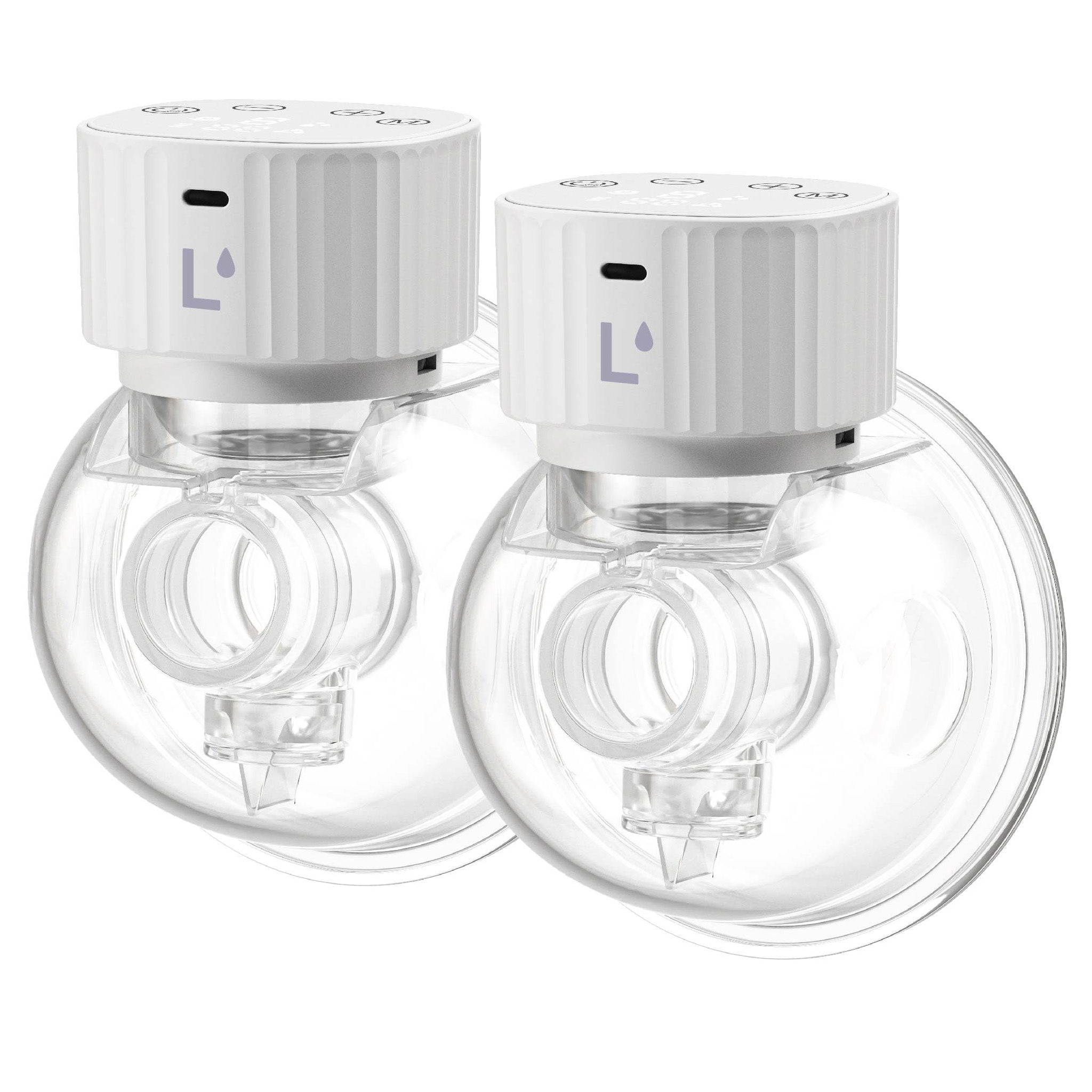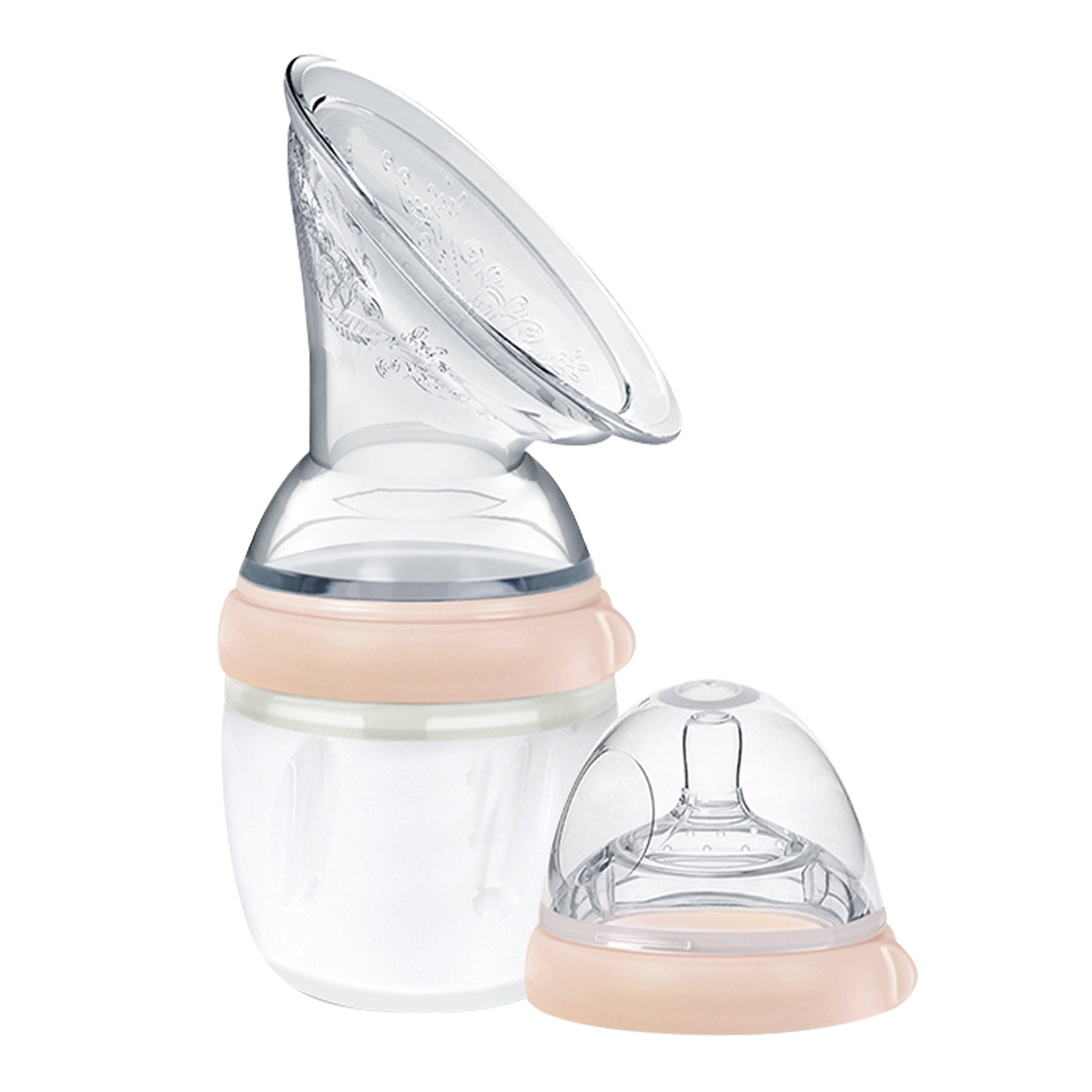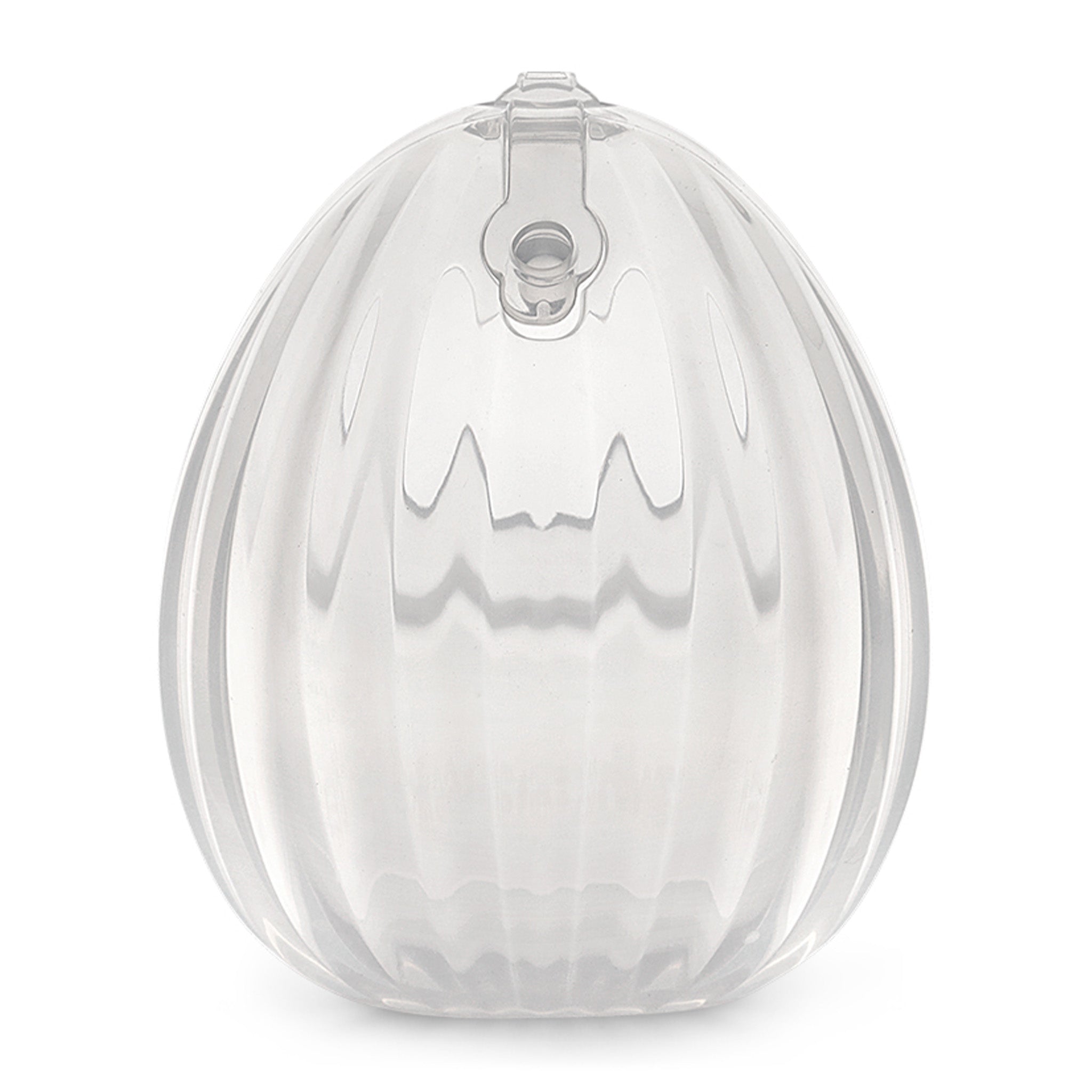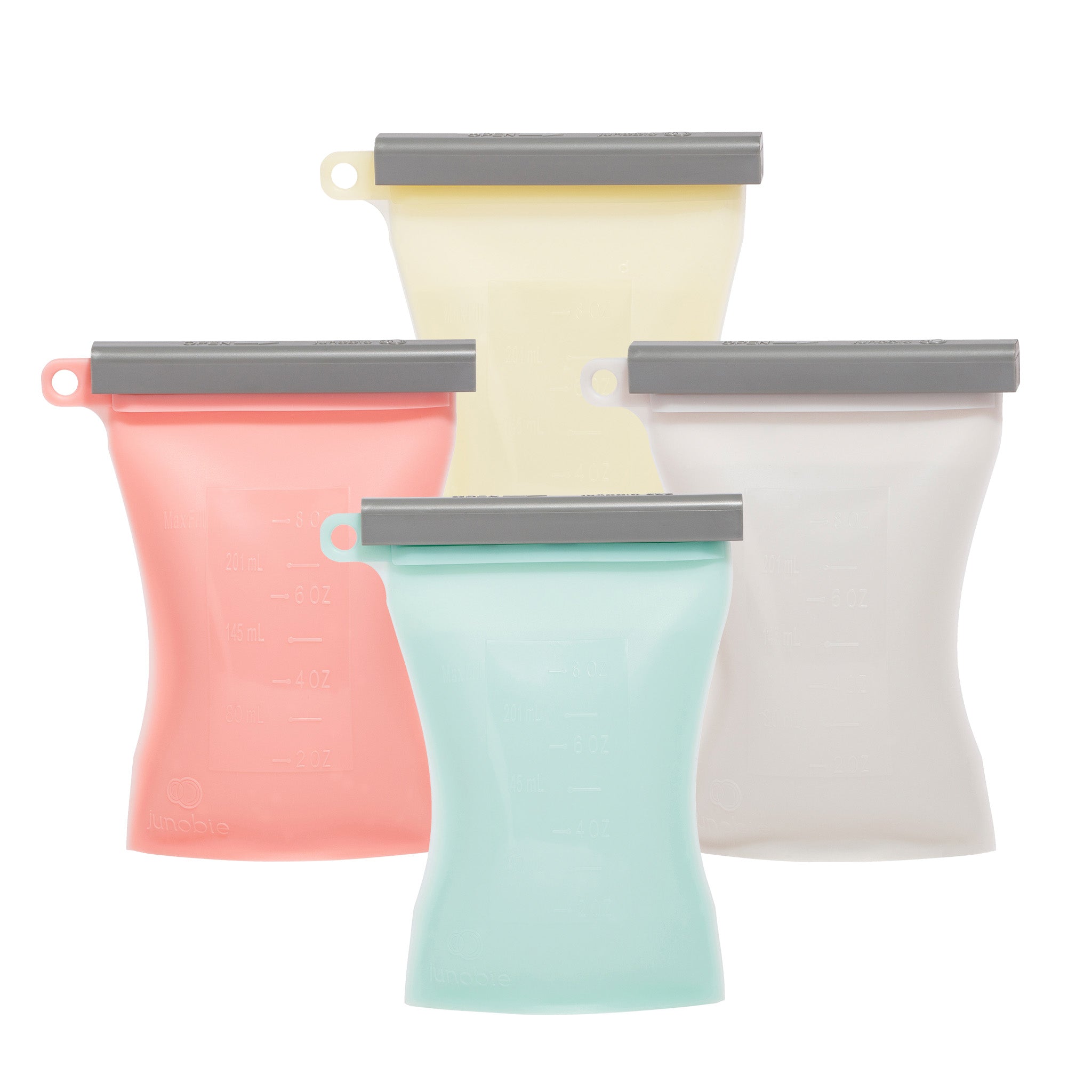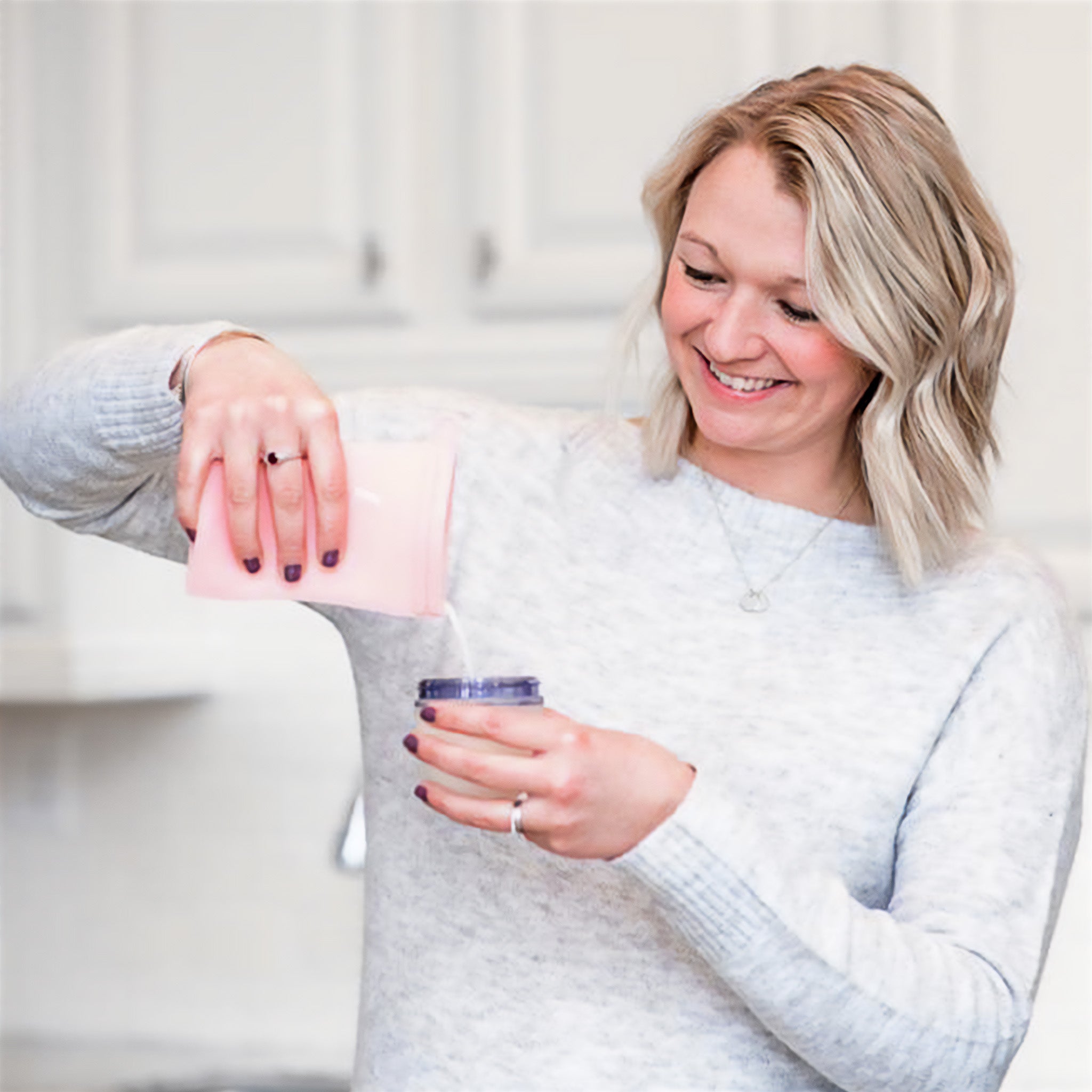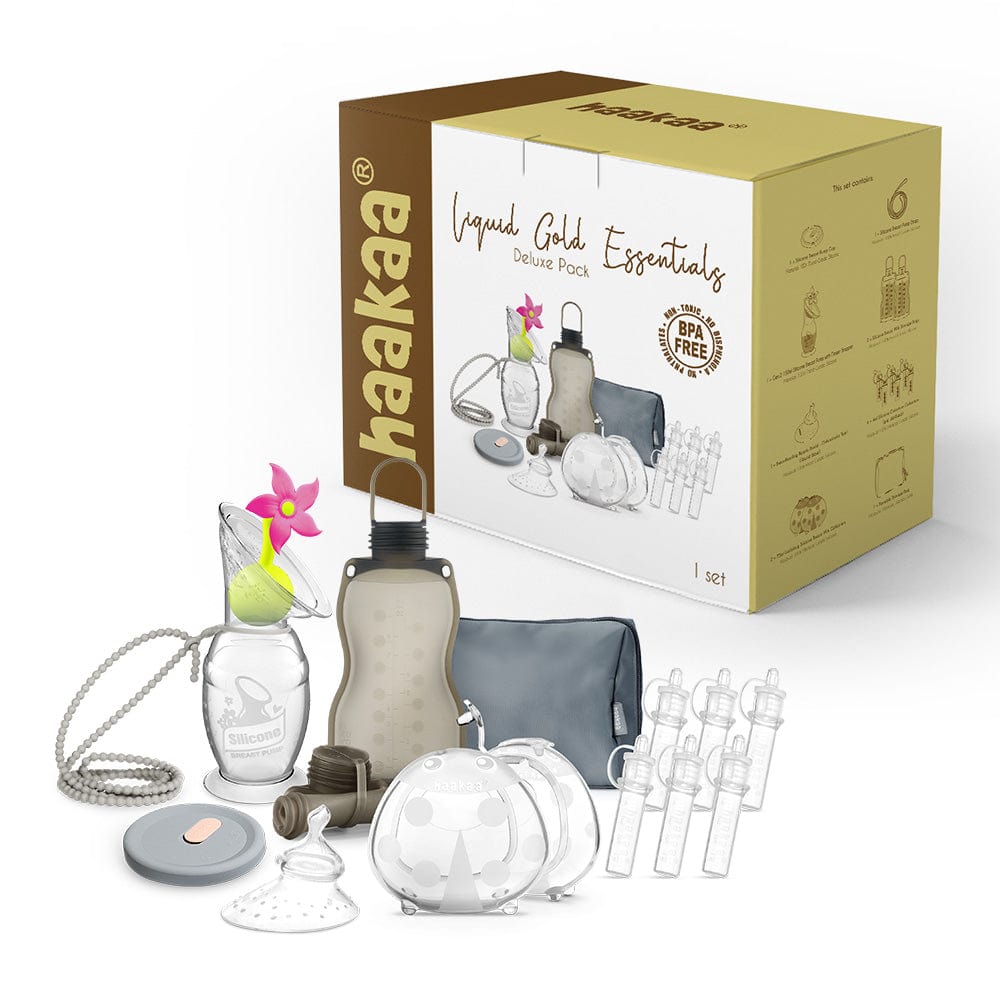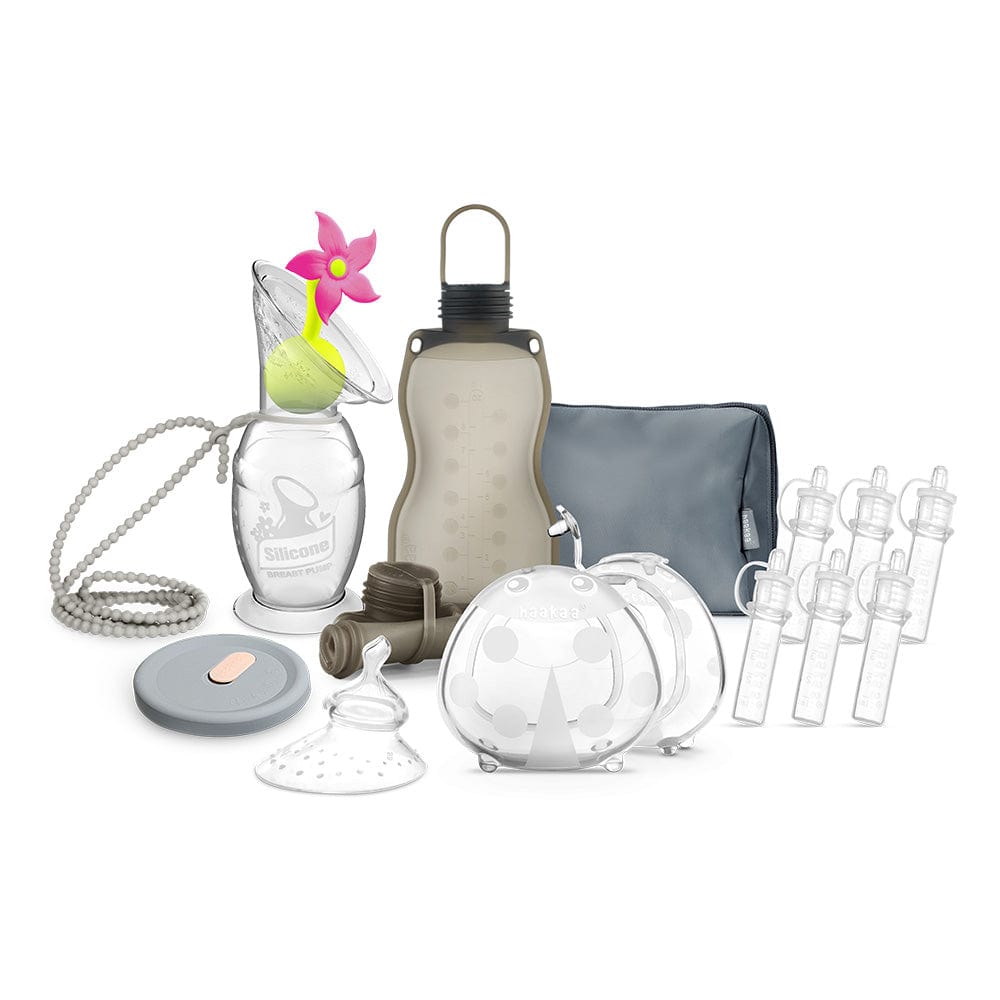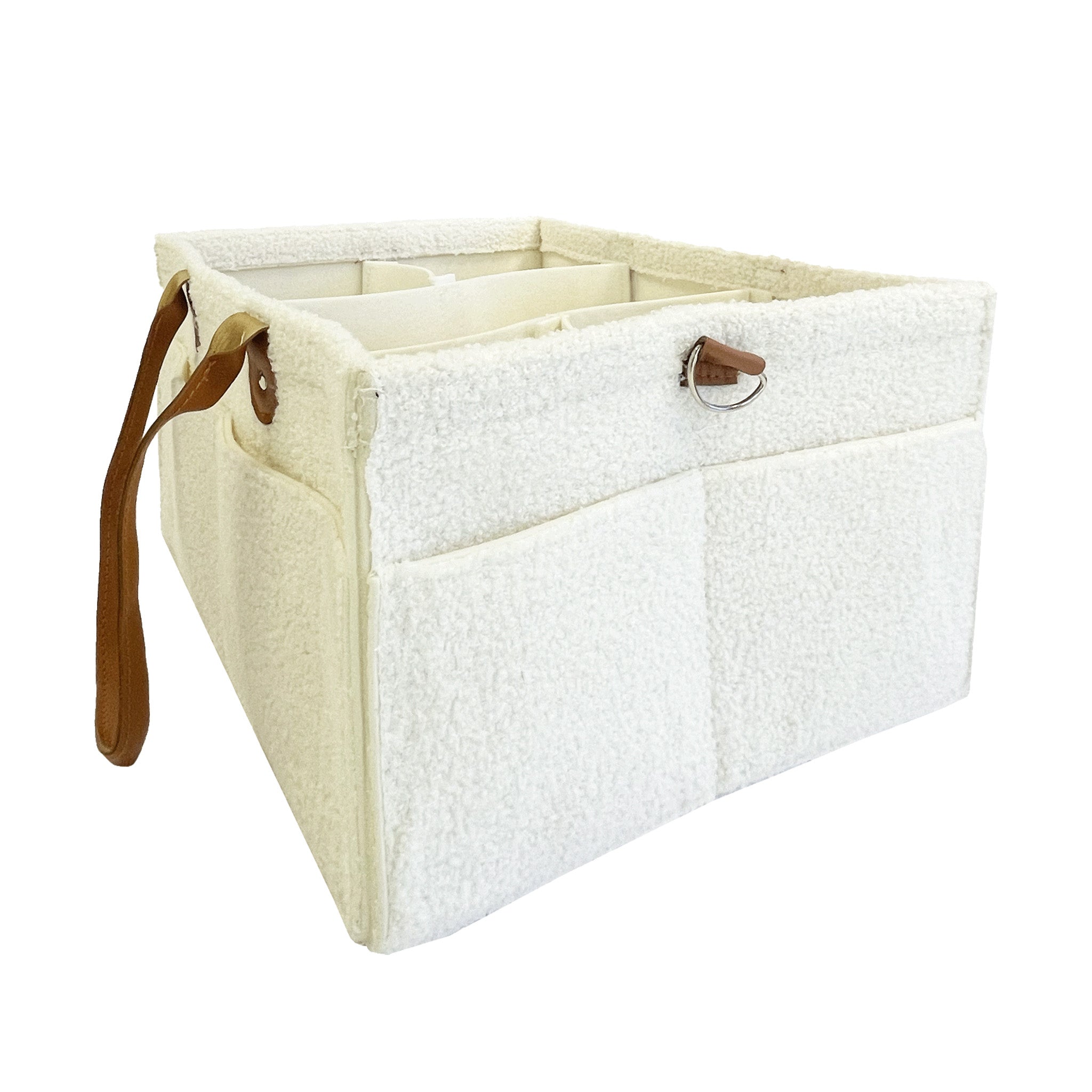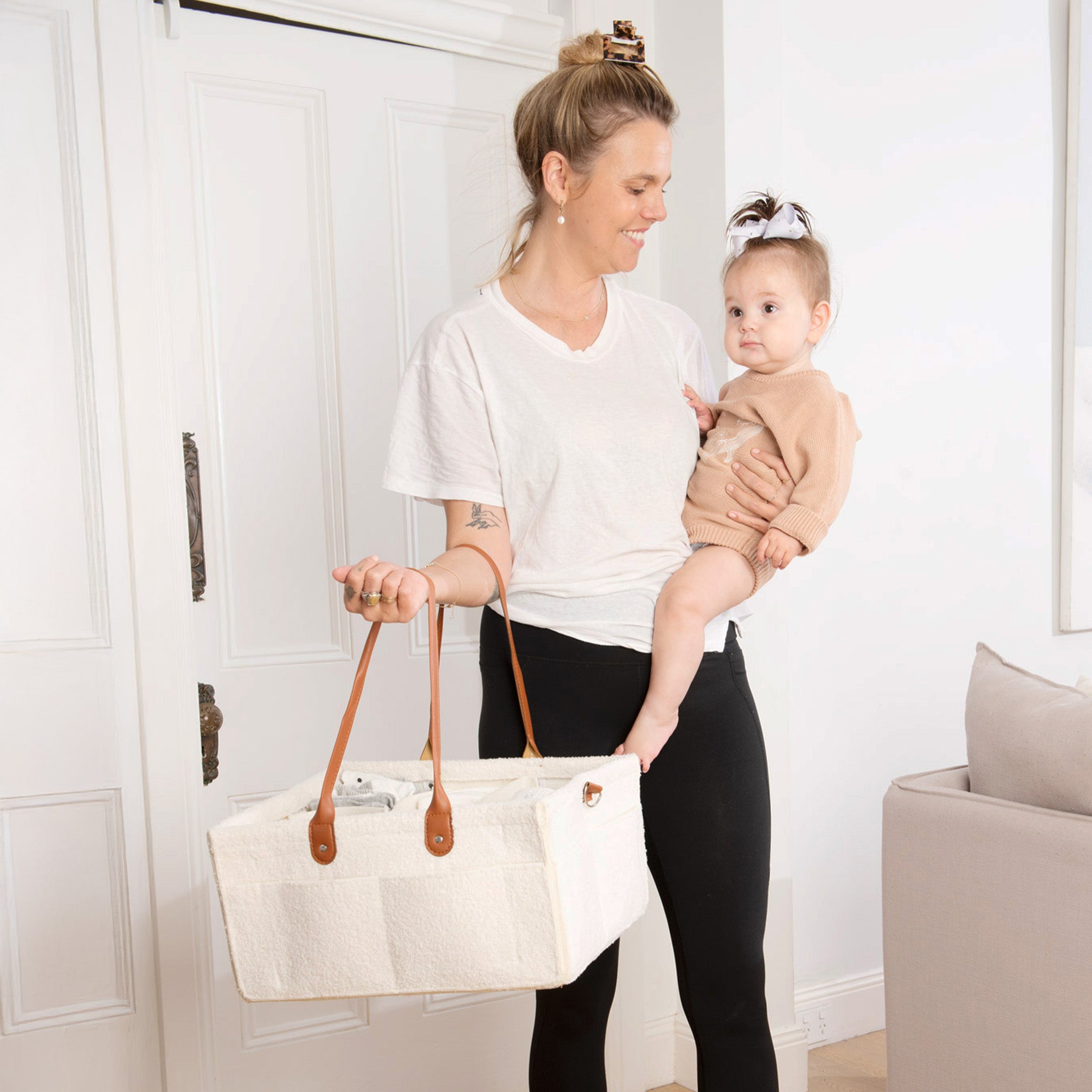Mixed feeding. It’s a topic that can inspire a lot of talk and many (MANY) opinions. We’re cutting through the noise to fill you in on the important stuff: what mixed feeding is, why it might be an option you consider and how it actually works so you can navigate your mixed feeding journey with confidence.
What is mixed feeding?
So, what exactly is mixed feeding? Typically, mixed or combo feeding refers to using a combination of formula and breastmilk to feed your bub as opposed to either solely breastfeeding or solely using formula.Parents may choose to mix feed for a whole host of reasons: a return to work, the need to share feeds with a partner or other caregiver, milk supply concerns, health issues.. The list is endless. Sometimes, for whatever reason, mixed feeding is the best fit for mum and bub which is a completely valid reason in itself.
Product Feature: Lactivate® ARIA® Wearable Breast Pump
The 411 on formula
The vast majority of parents are well aware of the benefits of breastmilk. They’re hard to miss! We are incredibly fortunate however, to live in a time and in a country where there is a safe alternative should you need to access it. Many mothers will have a lot of feelings about formula, both positive and negative. This is especially true if your breastfeeding journey hasn’t unfolded in the way you’d expected. While formula is different to breast milk, it can still provide your baby with the nutrients they need to grow and thrive. If you’re considering mixed feeding, it’s also worth noting that breastmilk and its amazing benefits still continue even when you’re not exclusively breastfeeding.
“I’m having breastfeeding issues, is mixed feeding my only option?”
While mixed feeding may end up being the best alternative for you and your bub, there may be other avenues you can consider, depending on the issues you are having. Your first point of call should always be an IBCLC or International Board Certified Lactation Consultant. An IBCLC is a lactation and breastfeeding professional who helps mothers, parents and caregivers when it comes to breastfeeding and breastmilk. They are experts in all things breastfeeding and can give the best advice when it comes to breastfeeding concerns. An IBCLC can offer practical advice on the best course of action for you and your bub and their support can often resolve many issues.
“I need to mix feed, now what?”
Getting started with mixed feeding can be daunting, especially if you’ve been breastfeeding exclusively. Your bubs age and how comfortable they are with a bottle, will generally be the determining factor in the best way to start the process.
If your baby has never had a bottle before, you may want to start with offering formula or expressed milk during a feed where your baby is relaxed. If they are wide awake and ravenous, you may not have as much success. These tips from our bottle-feeding blog post can help:
-
Give the bottle at the end of a feed to start with, as a satisfied baby will be more likely to try the new teat sensation.
-
Brush their lips gently with the teat in order to stimulate the rooting reflex and allow them to explore the teat. It feels and smells very different to you and may take some time to get used to.
-
Bottles often have a faster flow than the breast so make sure you give your baby plenty of rests if they need it and use a slow flow teat.
-
There are many different styles of bottles and teats and you may need to try several before finding one that you and your baby like.
-
Don’t be discouraged if it takes a while or if your baby rejects the bottle initially.
-
Sometimes it helps if someone other than mum gives the first few bottles as it can be confusing for bub if breasts are so tantalisingly close, but not being offered.
Once baby is comfortable with taking a bottle, you can begin to substitute feeds. Gradually introducing formula is generally a better idea as it can minimise tummy upset and allows your baby to adjust over time. Some mums like to substitute the morning or evening feed first when their partner may be there to help out, while others like to keep the first and last feed and substitute day-time feeds. Take it slowly and don’t put any pressure on yourself or your little one. You will find your groove, it just might take a little bit of time.
Your choice of formula will have an age related feeding guide on the back which can give you an idea of how many bottles your baby will need. You will need to factor in breastfeeds alongside bottles to ensure your baby is still getting enough calories/hydration.
Common challenges
Sometimes, the transition to mixed feeding will be seamless. Other times, as is the way with parenting in general, you will face a few speed bumps in the path. Common challenges when switching to mixed feeding include:
-
Tummy and/or digestion concerns as baby adjusts to formula - The composition of breastmilk is quite different to formula and some bubs may have a bit of trouble with digestion initially. If your baby is otherwise happy and healthy, this should settle quickly. You will notice a change to the texture (and smell) of their poo, also very normal. If your baby seems very unsettled/uncomfortable or is showing signs of a reaction, it may be worth speaking with your Doctor about which formula may be best.
-
A drop in milk supply - Breastfeeding works on supply and demand. The more you feed, the more milk you make. When you begin substituting with bottles, your body will receive the signal that milk is no longer needed at that time. This will usually cause your supply to drop slightly. If you continue to feed at fairly regular times, your body will eventually adjust to the new schedule. It is worth noting that sometimes your supply may take a permanent dip, especially if you replace the majority of feeds or begin mixed feeding before your supply is fully established. If you want to maintain your supply, you can add a pumping session when you’d usually be breastfeeding.
-
Nipple confusion/bottle preference - There is always a lot of talk about nipple confusion when it comes to bottle feeding. Nipple confusion generally refers to your baby developing a preference for a bottle nipple over your own or fussing when attaching to the breast. The way a baby removes milk from a bottle is very different to how milk is removed from the breast and for that reason, they can sometimes get confused or develop a preference for the easier, faster flow of the bottle.Unfortunately, there is not a huge amount you can do to stop this happening. Generally, older babies and toddlers will adapt a little bit better to switching between the two. If you do want to try and keep baby on the breast, have a look at the ratio of boob to bottle feeds and try to increase the first if possible.
-
Feelings of guilt - When it comes to feeding your baby, feelings of frustration, guilt, confusion and sometimes sadness are often part of the mix. If breastfeeding didn’t work out quite as you hoped then you may feel some grief around mix-feeding. Even if it’s your choice completely to move to mixed feeding, you may still feel a bit sad about one part of your feeding journey changing or worry about judgement. Just remember, you are making the choice that works best for you and your baby. You are a wonderful parent, regardless of how your baby is fed. Breastfeeding is wonderful when it works. Sometimes however, another alternative is a better fit and that is ok!




